I came, I saw, I purchased. If only people made purchases that easily! This probably happens to regular customers who already know your brand, but prospects are likely to set off on a lengthy decision-making journey. How can you avoid a “thanks, I’m just looking” scenario and drive more conversions? In this article, we will explore some lead generation tips that will not let your visitors leave empty-handed.
Content:
- What is lead generation?
- Why use lead generation?
- How to create a lead generation campaign
- Lead generation tips: creating a compelling offer
- Consider your offer as an investment
- Use the “jobs to be done” approach
- Make your offer using video
- Lead generation tips: creating a punchy call to action
- Personalize your CTAs
- Experiment with the number of CTAs and their design
- Use a “call to value” not a “call to action”
- Lead generation tips: creating a high converting landing page
- Try different variants of the same landing page
- Invest in your copy
- Use social proof
- Lead generation tips: creating a high converting form
- Align your forms and offers
- Use multi-page forms
- Use chatbots instead of forms
- Putting it all together
What is lead generation?
There are two ways to help your prospects through the decision-making journey: grab them by the hand and quickly sell them your product or pave the way for them to make a purchase with care and attention.
The first strategy, also known as outbound marketing, doesn’t work like it used to: people have gotten overwhelmed by advertisers and consider cold calls and emails an intrusion. The second strategy is aimed at building relationships, converting your visitors into leads, and nurturing them until they are ready to buy.
Every relationship starts with making an acquaintance, so lead generation is the process of getting to know your prospects: collecting their contact and personal data to use for further marketing, sales, and support communications. People who have expressed interest in your product or service and shared their contact information can be defined as leads.
Leads can come from different channels. Then they are scored and pass through several sales stages until the deal is closed. In online marketing, leads are unique website visitors who provide you with their contact information or personal data, sometimes in exchange for a valuable piece of information.
There are two main categories used to define the lead generation process and the term lead itself:
| Business in general | Online marketing | |
| Leads are… | Contact information of people or businesses who are interested in your service or product. | Contact information and personal data of your website visitors. |
| Lead generation is… | Attracting prospects and converting them into leads using inbound and outbound marketing strategies. | Inbound marketing techniques that aim to attract website visitors and convert them into leads. |
In this article, we will dive into online lead generation tips that allow you to capture as many leads on your website as possible. That’s the second stage of your overall online marketing strategy:
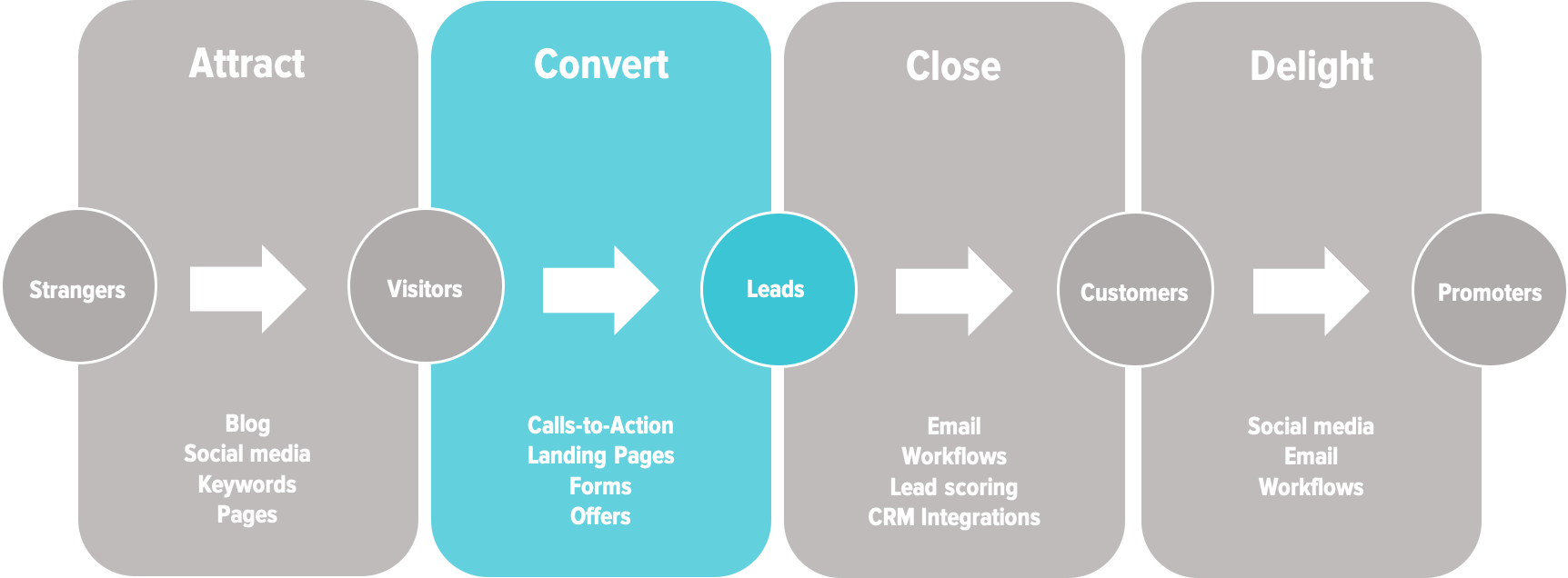
Why use lead generation?
The goal of lead generation in online marketing is to reduce your bounce rate, converting as much of incoming traffic as possible. It maximizes the effect of all your marketing campaigns by warming up potential customers and getting them on their way to making a purchase.
This strategy is worth considering for small businesses, as it helps you get more leads at a lower cost. Apart from that, it can inspire organic interest in your product and contribute to brand awareness and recognition.
Here is an example of a small business lead generation strategy. Candy Club offers a 15% discount in exchange for users that provide their contact information right at the moment they arrive on their website. A pop-up can be irritating, but in this particular case it works like a nice welcome gesture and an invitation to join the club:
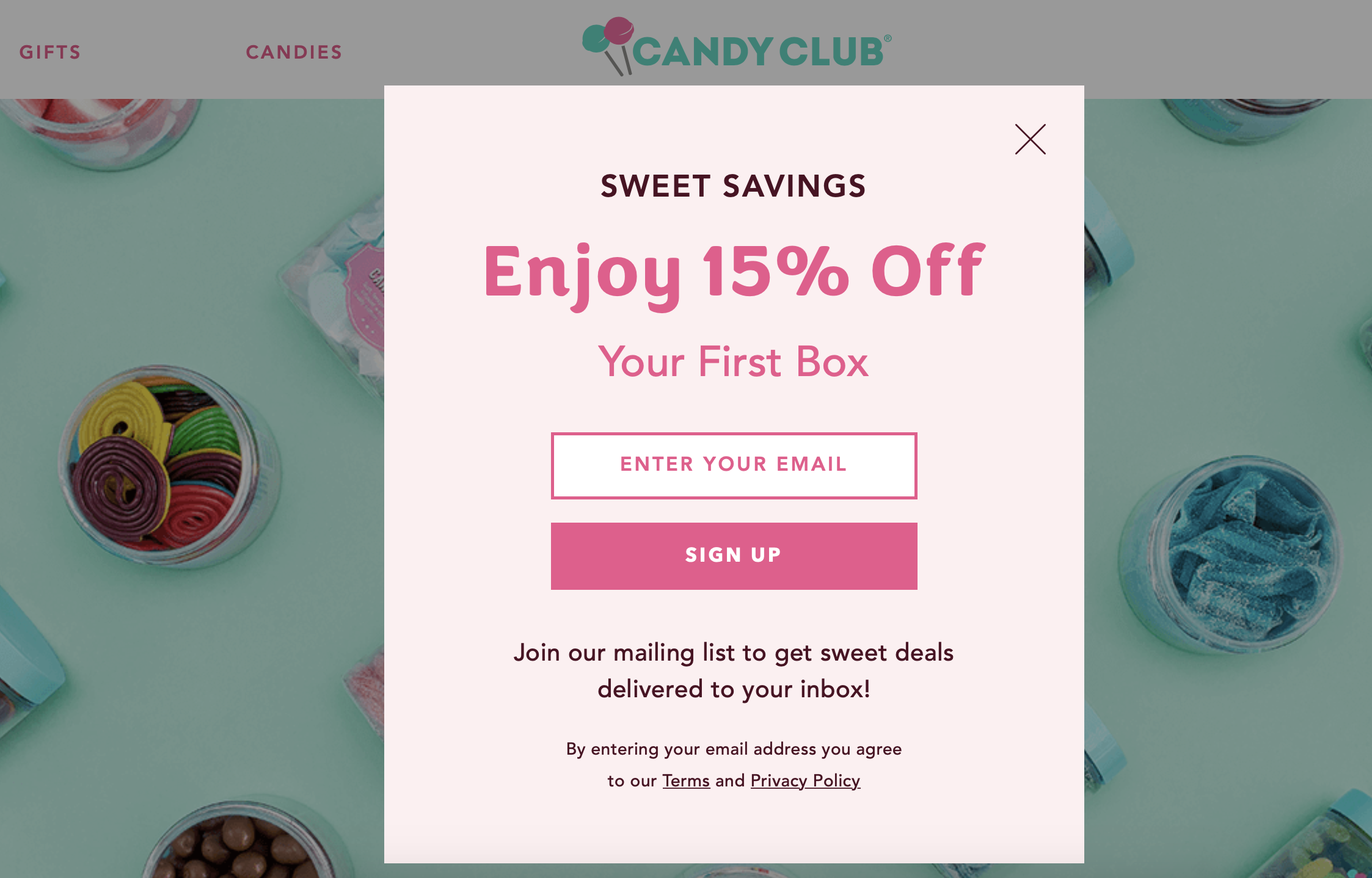
How to create a lead generation campaign
Let’s imagine you own an online flower shop. You have a website and use Instagram and paid search ads to reach your prospects. With lead generation, you can convert your paid search traffic more effectively: for example, by building a mailing list and using it for seasonal email promotions or lead nurturing email campaigns.
To build a list of subscribers, you need to inspire your visitors to leave their contact info. People are not likely to share this, especially now, when personal data has become a bargain item. To encourage them, use the power of free content: think of something useful you can offer in exchange.
For example, it could be a checklist on “How to choose flowers that will last” or a list of gift ideas for Valentine’s Day. This piece of valuable information is your offer and the first component of your lead gen campaign. To use it as a magnet for your leads, you will also need:
- a call to action that inspires your visitors to check the offer;
- a dedicated landing page that shows the value of the offer;
- a form to collect data and contacts.
A typical lead generation sequence looks like this:

A call to action, a landing page, a form, and an offer are the four main components of the lead generation process. Let’s take a closer look at each of them.
Lead generation tips: creating a compelling offer
Offers, also called lead magnets, attract visitors and convert them into leads. The most widely used types of lead magnet content are coupons, eBooks, demo versions of a product, quizzes, checklists, webinars, and so on. The only limit is your creativity.
Best practice: To come up with ideas, think about your sales funnel. What information is valuable to build awareness or help your prospects during the consideration or decision stage? Think of the content that will cover all of these stages.
Below are some tips on how to make your offer irresistible.
Consider your offer as an investment
As many businesses already employ lead generation techniques, the content you provide should meet the highest standard. It should be useful, easy to comprehend, and beautifully packaged.
Here are some guidelines and good examples for you to follow in your small business lead generation campaigns:
| Your offer should… | Bad example | Good example |
| bring value and solve a specific problem | A free article about good or bad florists | A checklist on how to choose flowers that will last |
| be authentic and competent | A list of five London sights that everybody knows about | A list of hidden gems of London by a local guide |
| be nicely packaged and timely | A self-made unedited .ppt file delivered in three days | A branded and thoroughly designed eBook delivered right away |
| be clear and easy to use | Raw excel tables and diagrams about trends in marketing 2020 | A report with infographics and key figures, paired with explanation notes and recommendations |
Use the “jobs to be done” approach
Think of your leads and their daily tasks and routines. Which of them are the most puzzling or time-consuming? Coming back to our flower shop example, this could be the task of signing a greeting card. Do this task for them: create a catalog of beautiful and witty wishes to choose from.
For example, Unbounce built a whole library of beautiful templates to inspire their prospects and demonstrate that their landing page builder is easy to use:

Best practice: If you provide templates, make them easy to fill out and print. If you offer spreadsheets, the numbers should be easy to manipulate. Likewise, if you offer recipes, make sure the ingredients are accessible and affordable.
Make your offer using video
Today, it goes without saying that video is one of the most in-demand formats. The Impact of Video Marketing Report by Vidyard claims that video content can increase your CTR by 34%.
Video is worth using in small business lead generation campaigns: simple how-tos, demos, and case studies don’t need costly high-quality production. We are living in the age of IGTV and live streams that don’t require any post-production and can be recorded at no cost at all.
Videos can be used as:
- lead magnets;
- teasers on your landing page;
- a piece of gated lead generation content on your main website.
Some video services offer turnstiles, built-in forms that are placed at specific parts of a video to encourage users to provide their contact info to continue watching. With turnstiles placed in 10-20% of the content, videos convert at 43%, though they reduce the number of views and average watch time.
There are also special pop-up forms that can automatically appear after a user finishes watching a video. These forms cab pass users’ contact details directly into your CRM:

Don’t use video for the sake of it. If you use video content as an offer, use video strategy and tactics to pick the right formats and stay efficient.
Lead generation tips: creating a punchy call to action
A call to action is a message that motivates a person to learn more about your offer. It can be a button, a link, or a banner embedded in a blog post, website, or email. It is an important part of any marketing campaign, as it routes traffic to your landing page.
Most CTAs are quite concise and instill a sense of urgency: “download now,” “shop now,” “register now,” “start free trial,” or “get a pro version.” They vary not only in the microcopy used but also in the way they perform. Below are some tips on experimenting with CTAs to optimize your small business lead generation campaigns.
Personalize your CTAs
Personalization is a fast-growing trend for 2024. CTAs are no exception; the more relevant the message, the better. In this sense, CTAs can be:
- basic, or static CTAs that are the same for any website visitor;
- multivariate, or variants of basic CTAs that are used in split tests;
- smart, or personalized CTAs that adapt to the visitor who sees them.
According to Hubspot stats, smart or personalized CTAs perform 202% better than basic and multivariate. That’s because they allow adjusting messages the specific stage of a given customer’s journey:
- CTAs for first-time visitors can encourage them to become leads;
- CTAs to nurture leads, with the aim of converting them into customers.
If you decide to try smart CTAs, consider linking them to relevant offers. For a first-time visitor’s CTA, it could be a helpful how-to guide, for a lead’s CTA, it could be a demo or a free consultation.
For example, Netflix personalizes their CTA button, showing “Try 30 days free” to first-time visitors and “Restart your membership” to former customers that came back after canceling:
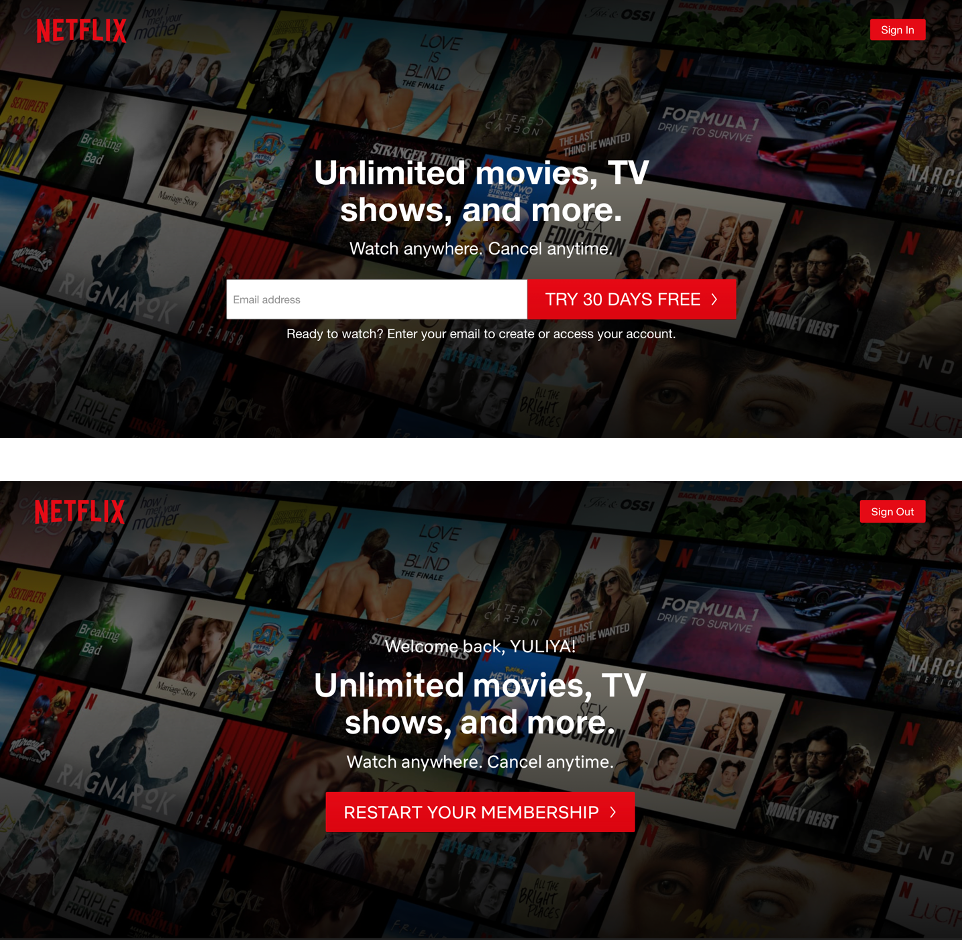
Experiment with the number of CTAs and their design
Another insight from Hubspot: CTAs that appear as buttons perform better than those that appear on images or banners. On the other hand, anchor text CTAs outperform button CTAs, generating between 47% and 93% of their blog posts’ leads.
This doesn’t mean that you have to go heavy on text CTAs: use a variety of CTAs at different levels of your blog post or website. Multiformat CTAs increase the chances that your visitors click through, even if they don’t make it to the end of the page.
Here’s how Hubspot uses embedded text links at the top of their blog posts:

And embedded banners at the end of the article:

There are also slide-in CTAs that are worth giving a try. They usually include copy, an image, and a CTA button and appear when you scroll down on the page. They can be more eye-catching than text links and are usually seen sooner than a banner CTA at the bottom of the page.
In this example, LeadAdvisors use a CTA that slides in on their blog pages and also throughout their website:
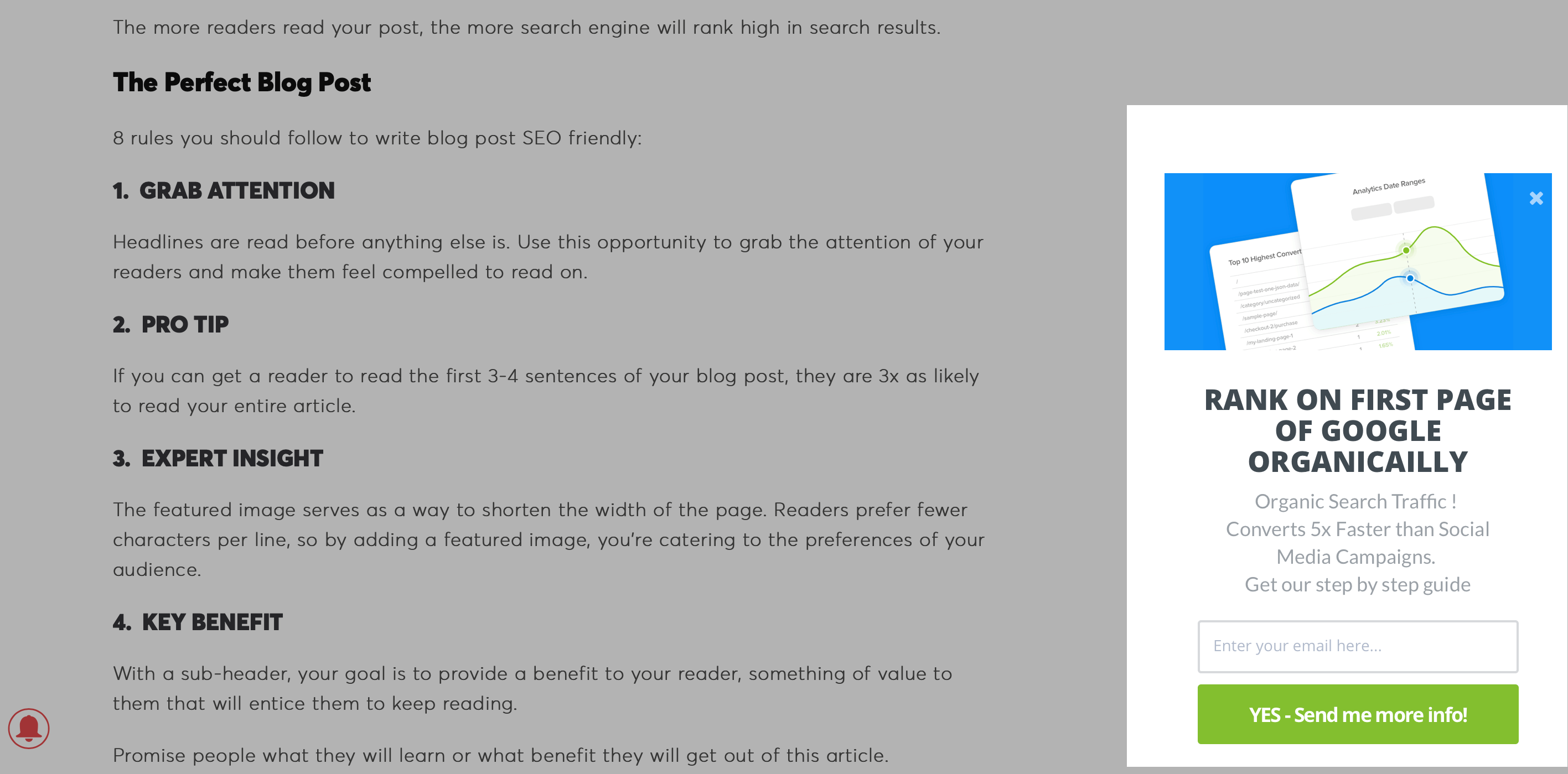
Use a “call to value” not a “call to action”
Test different types of microcopy or wording to get the most out of your CTA. CTAs appealing to value perform better than those just driving an action because people don’t look for a product; they look for the value behind it.
Here are some examples to show you the difference:
| Call to action | Call to value |
| Sign up | Create your website |
| Get started | Get your payroll up and running |
| Start free trial | Send your first email |
Lead generation tips: creating a high converting landing page
A landing page is the hub of your lead generation strategy. It should clearly guide your visitors to take action — fill out the form and leave the personal info. An effective landing page is always dedicated to one offer. That’s why, if you have a number of lead magnets, you should create a separate landing page for each of them.
Best practice: Think of several offers corresponding to different stages of the customer’s journey and create dedicated landing pages and CTAs.
Landing pages used for lead generation are usually quite simple but it doesn’t mean that you cannot apply some tips to make them convert better.
Try different variants of the same landing page
There are five core elements of a landing page:
- a unique selling point, usually stated in the first screen;
- a hero image and overall page design;
- features and benefits copy;
- social proof;
- call to action.
Each of these elements influence your conversion rate. So, use some best practices to craft a high performing lead generation landing page, test, and iterate it.
Modern landing page builders have A/B methodology or even AI to help you squeeze every bit of ROI out of your landing page. While A/B testing is about creating variants of a landing page and choosing the one that converts best, AI-powered conversion tools automatically route visitors to the landing page where they are more likely to convert.
There is no magic behind it; only lots of data. AI analyzes your visitors’ attributes and conversions and forecasts their behavior based on the behavior of people with the same attributes: if users with specific attributes convert better on the landing page A, then all new visitors with the same attributes should be routed to page A.
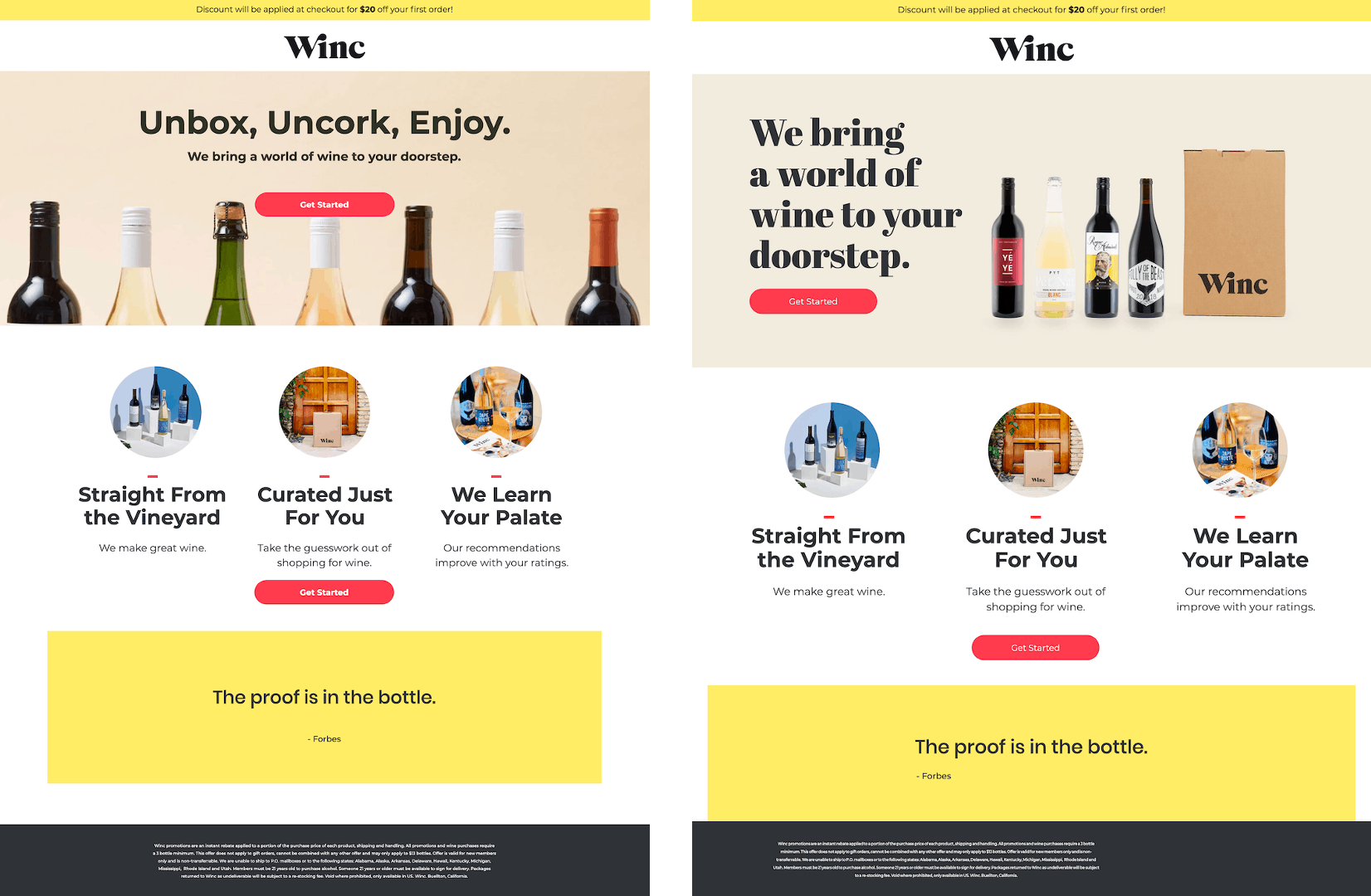
Invest in your copy
High-converting landing pages have a clear and compelling value proposition. To come up with the best wording, research your customers, their pain points, and the language they use. Instead of writing a catch-all copy, make your copy sound like your customers wrote it.
Note: Words like “enhance,” “unleash,” or “empower” that are popular on lots of landing pages are not your friends; people don’t talk like that.
This is how Gusto, a comprehensive platform for HR specialist and accountants, voices its value proposition in a simple and friendly way:
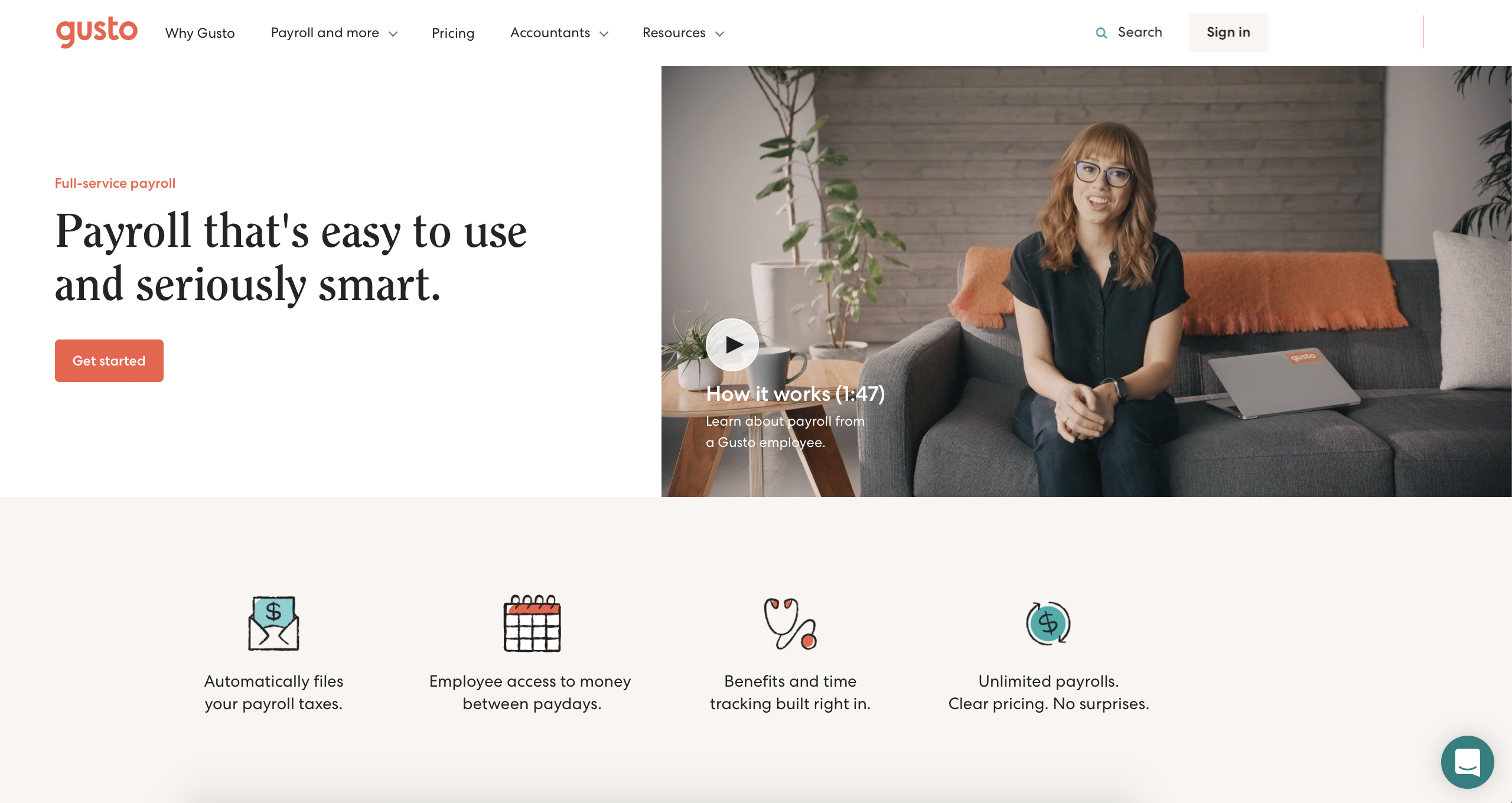
To sum it up, a quality landing page’s copy is:
- value-centric, not product-centric;
- specific and uses figures instead of salesy slogans;
- customer focused.
Use social proof
There are four types of social proof widely used in ads and on landing pages:
- big brand logos;
- testimonial quotes;
- video testimonials;
- media mentions.
But there is also some space for creativity. Remember the hack that Booking.com and Airbnb use, by showing how many people are looking at the same proposal right now? This motivates leads to make their decision faster. No code is needed to adopt that approach: there are already automated add-on solutions that can easily integrate such notifications into your landing page.
As an example, Provely offers built-in notifications for lead generation, showing people who already registered for the webinar or signed-up for the newsletter. The widgets are easy to program and customizable.
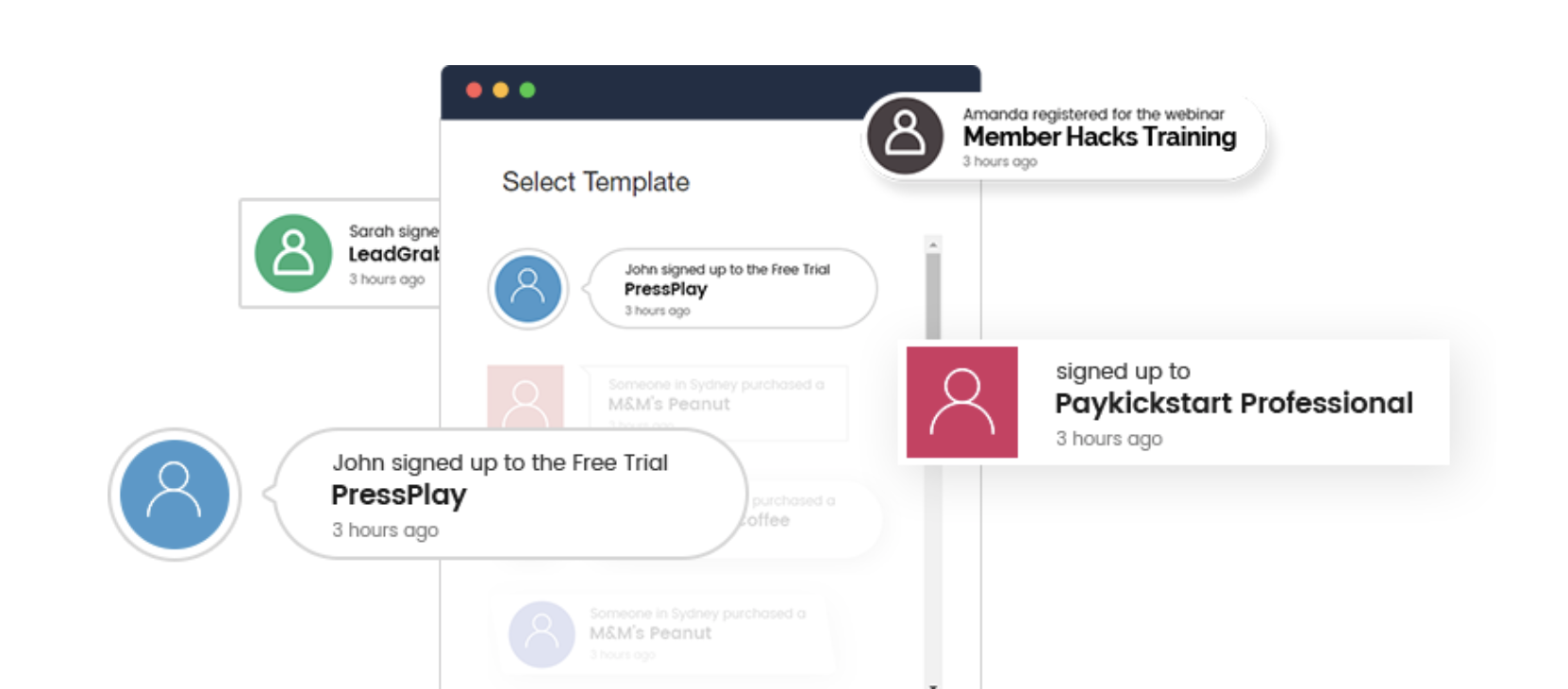
Lead generation tips: creating a high converting form
Last but not least, forms are an integral part of your lead generation campaign.
With SendPulse subscription forms, you can create responsive pop-up windows, embedded, floating, or fixed forms and change them on the go. There are flexible display options, so you can choose when and where to show the form to your prospect. The confirmation flow is easy to set up, including notifications, emails, and pages.
The main challenge when creating forms is to balance the amount of data you request. People are not likely to fill in rows and rows of information, so only ask for what you need and keep the number of form fields to a minimum.
Align your forms and offers
It’s all about value: people are ready to share more data when the offer is worth it. So, the more value you provide, the more information you can request. If it’s just a pop-up offering a discount or an email subscription, a form with a single email address field will do:
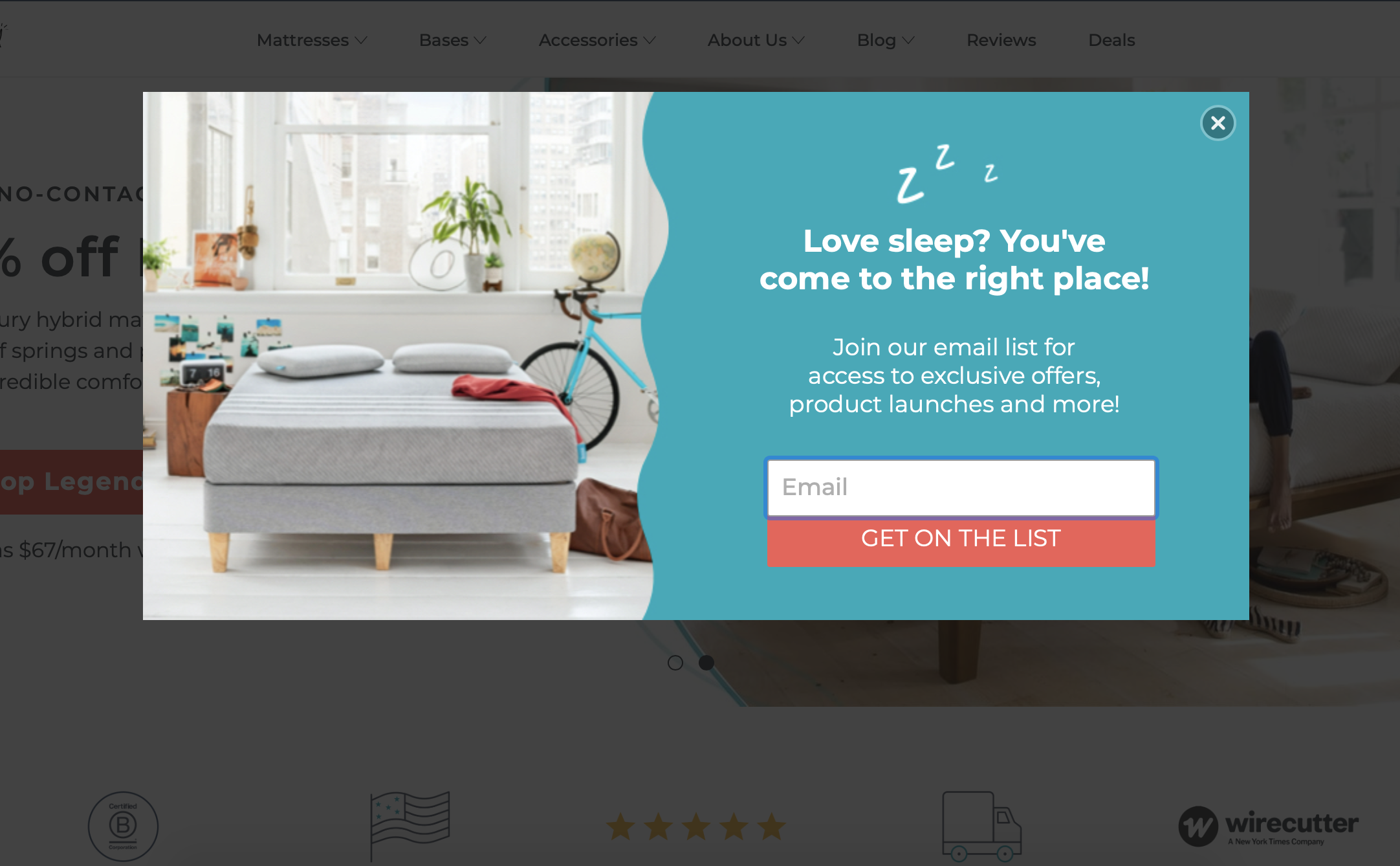
If it is a huge trends report, don’t hesitate to package it respectively and to ask for as much information as you need.
For example, Hubspot created a Not Another State of Marketing Report, which includes research data and curated stats from nine experts. The form they use to collect the data contains eight rows, but who cares — the offer is worth it.
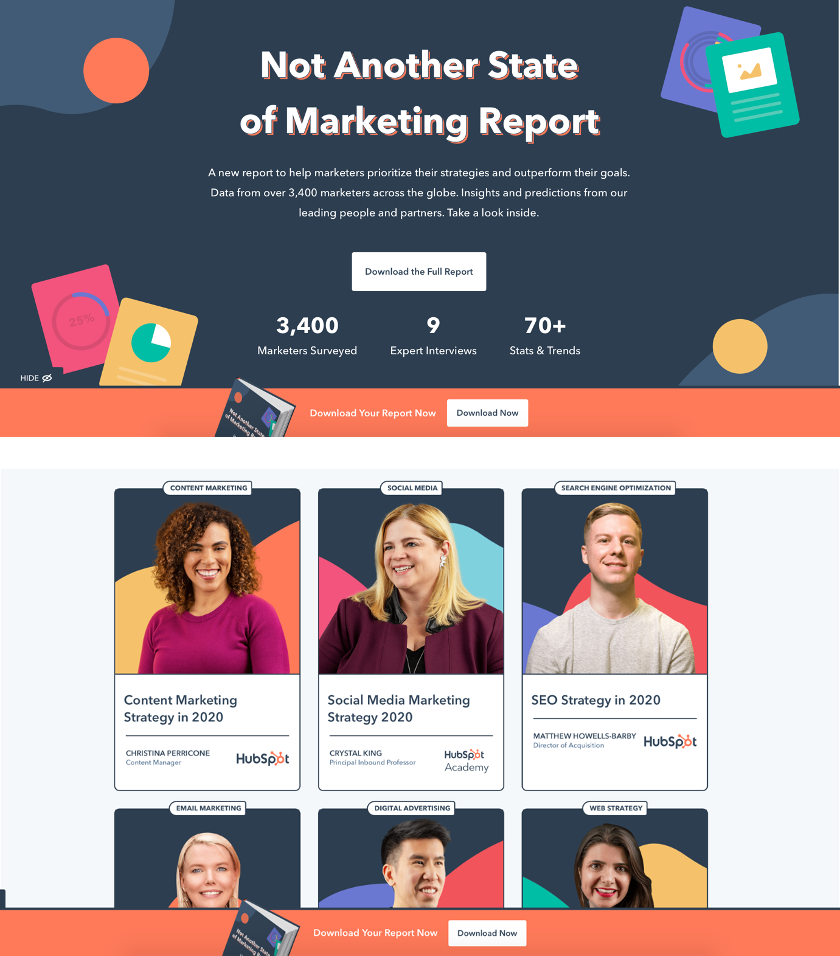
Use multi-page forms
In the above example, Hubspot uses eight form fields, but they are split into different screens and have a progress indicator, so the form is not perceived as overwhelming at all.
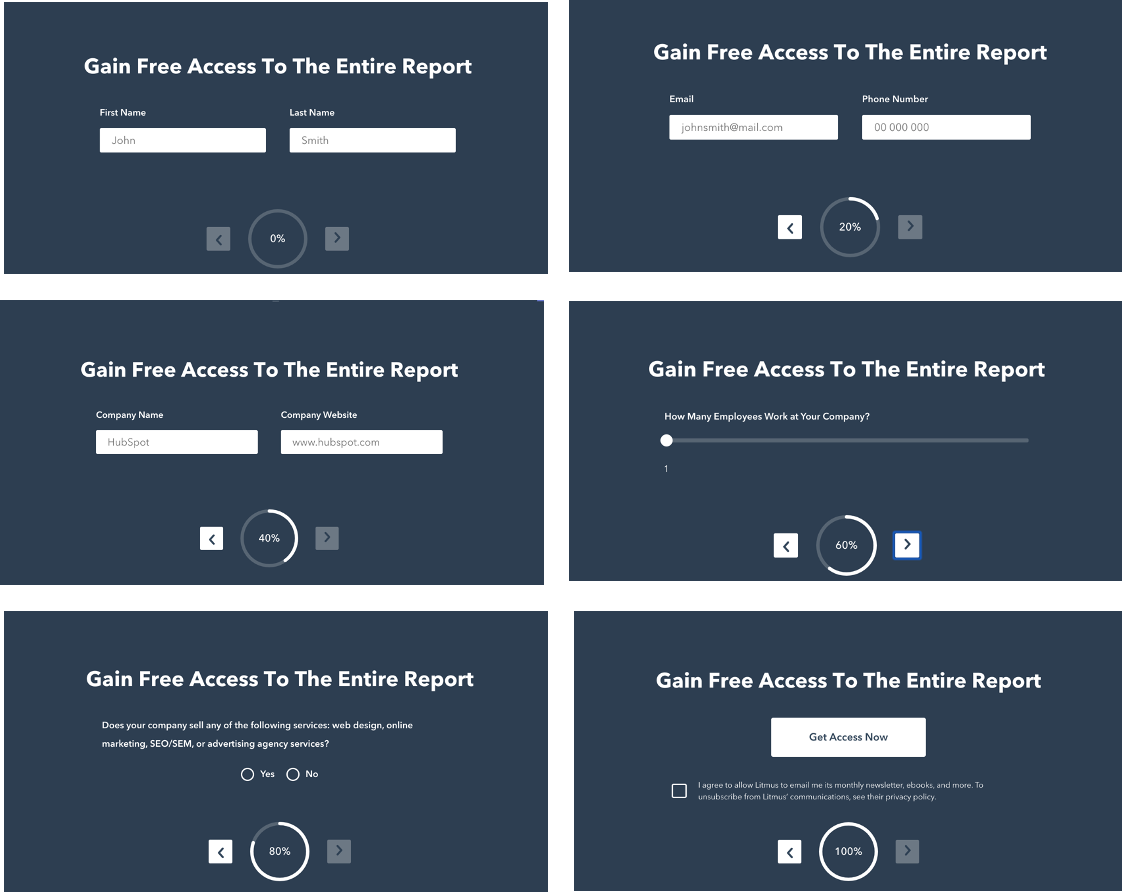
Use chatbots instead of forms
The process of filling out subscription forms becomes a delight if you use a chatbot.
Chatbots bring back the human element, engaging a website visitor in a conversation. There is one more advantage: if your visitor is still not ready to provide their contact info, the chatbot can try to work with that objection.
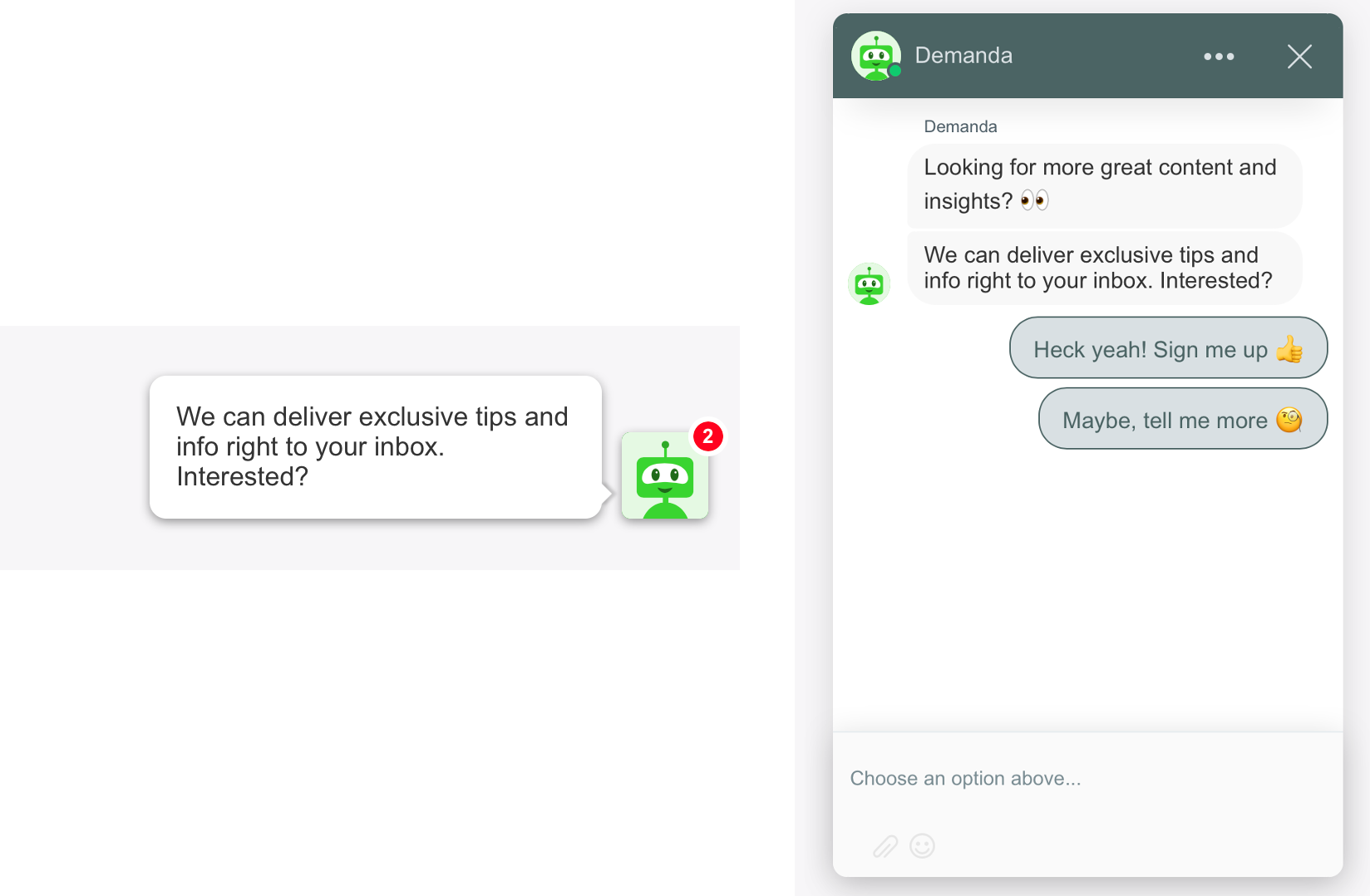
Pro tip: Use other automated lead generation tools to level up your lead generation. They can help you build CTAs, landing pages, and forms; score and qualify your leads; create and launch lead nurturing campaigns; integrate CRMs; use analytics and reports.
Make sure to check out our YouTube video about helpful tools for lead generation.
Putting it all together
Lead generation is not only the process of collecting your visitors contact info and personal data. It is about building a long lasting relationship and providing value. Here are some key takeaways if you are willing to adopt an efficient small business lead generation strategy:
- Invest into a quality offer. The more value you bring, the more information your prospects will be willing to provide.
- Personalize your CTAs according to the consumer journey’s stage.
- Create dedicated landing pages for each offer and experiment with content.
- Use multi-page forms and chatbots to ease the process of providing the information.
Don’t forget to sign up with SendPulse to launch further lead nurturing email campaigns and convert your leads into customers!








